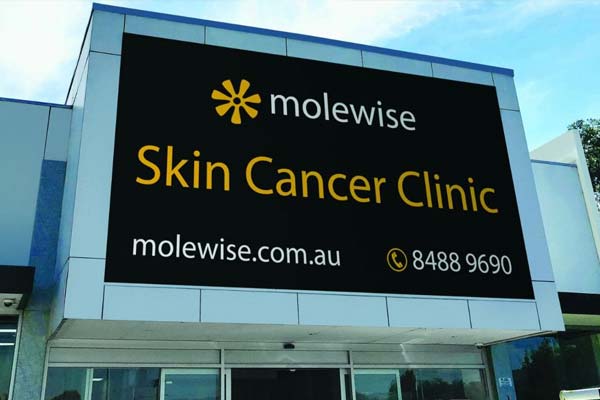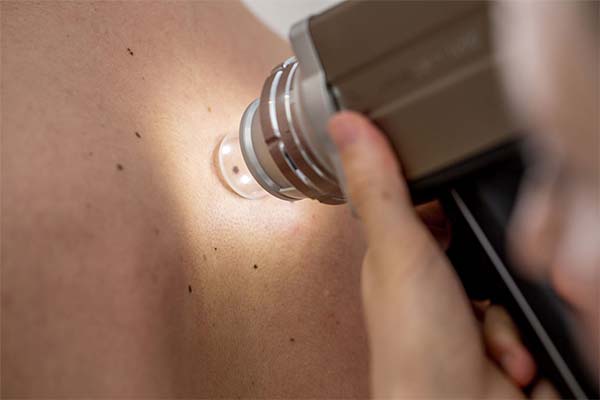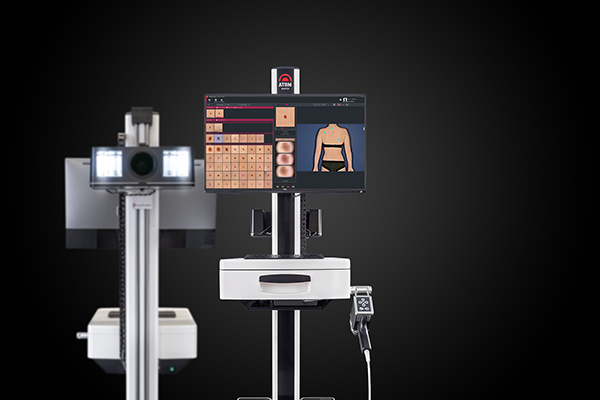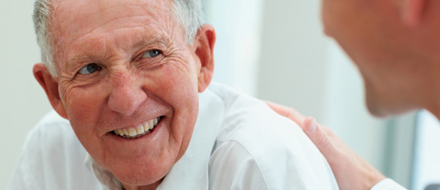Our comprehensive service includes complete skin checks, screening, monitoring, and treatment of any spots or moles requiring further attention. No referral is required from your GP.
Skin Cancer Check


SKIN CHECK
How to prepare for a Skin Check?
We aim to ensure that our patients feel comfortable during the whole examination process and will leave with the peace of mind that they have the “all clear” with no suspicious spots having been detected, or that a lesion has been detected requiring appropriate and further attention.
You will be asked to highlight any new or changing spots of concern on any part of your body, which will be expertly assessed along with all of your other spots on your face, scalp, neck, torso front and back, arms and legs. For the skin examination you will be asked to undress behind a curtain screen, with removal of all clothing except for underwear (bra left on for females). A cover gown/sheet is available if required.
We advise that there is no applied makeup, nail polish and Self Tan prior to your mole check to allow a clear view to all areas requiring assessment.
What is a Skin Check?
Your skin is checked from “top to toe’ using specialised magnifying equipment to assess your moles, with any spots requiring monitoring or removal photographed under high magnification.
You will also be assessed in obscure non sun exposed areas such as between your toes and under your arms where Skin Cancers including melanoma although rarely, can occur. As mentioned, your underwear including bra will remain on during the assessment, however you will be asked if there are any new or changing spots of concern under these garments.
At Molewise we understand the importance of our patients being thoroughly assessed with the latest dermoscopy equipment and technology systems available
today. We also know that the effectiveness of any equipment can only be maximised when used confidently by a highly qualified expert in Skin Cancer Medicine.
Total Body Mapping Photography is utilised as an important aid to a full Skin Check, where a series of over 20 clinical overview images used as a baseline, can assist in detecting skin cancer and melanoma in their early stages.

The advanced Fotofinder ATBM Master technology creates a total body, high resolution Mole Map image series.
With the aid of the advanced imaging software, this allows us to evaluate and compare suspect moles at a high and detailed magnification.
Any small subtle change over a short, medium or long term period allows targeted moles to be assessed and appropriately acted upon.
New patients attending for a full skin check are recommended to also have a baseline Total Body Mapping Photography performed.

If required, any skin biopsy or excision specimen, which may be performed for further assessment, is sent to our affiliated Pathology Lab for prompt analysis and a final expert diagnosis.
On completion of your skin examination, you will be advised of your level of risk for developing skin cancer in future and when your next complete skin check is recommended.
It is important to attend for assessment of any spot that you may note as being new, changing, growing, itchy, sore or bleeding at any time between routine skin checks as soon as possible.
How long does a full body skin check take?
A standard full skin check takes approximately 15-30 minutes, depending on the number and complexity of spots requiring assessment for each patient.
What does Skin Cancer look like?
Skin Cancers including Melanoma commonly present as a more obvious dark larger standout “ugly duckling”, however they may also appear in a less obvious manner as either; flat, raised, round, irregular shaped or even pink in color!
Along with prevention by “slip on a shirt, slop on the sunscreen, slap on a hat, slide on the sunglasses and seek shade”, early detection is the best chance we have to minimize the harm done by melanoma and skin cancers in general.

SURGICAL PROCEDURES
How are Skin Cancers and Melanoma treated?
Surgical biopsy or simple and more complex procedures are performed when necessary in the diagnosis and treatment of lesions suspicious of Skin Cancer.
These procedures are routinely booked as a day procedure. It is important that every patient preparing for a procedure has all their queries
attended to and is made comfortable with what to expect before, during and after their procedure.
The procedures are performed under local anaesthetic where particular components are used as a standard at Molewise to minimize any potential patient discomfort. The area is always tested before any excision is performed to ensure that no pain is felt during the procedure. The local numbing effect can expect to begin to wear off after 3-4 hours, where no, to minimal discomfort is expected, with only Paracetamol (Panadol) required on some occasions for mild pain after surgery.
After your skin check, if it has been determined that a skin lesion requires biopsy or complete surgical removal, the fee for any procedure can be advised before the surgery and will vary depending on the duration, site and complexity of the procedure.
Non surgical treatment methods can also be used for pre cancerous spots and for some early, superficial skin cancers where appropriate. These include: 1/Topical creams which target and treat certain types of superficial skin cancers including Bowen’s disease and superficial Basal Cell Carcinoma, and 2/ Cryotherapy (freezing), which can also be used to treat pre cancerous Solar Keratoses (sunspots).
COSMETIC MOLE REMOVAL
At Molewise, our expertise and experience in assessing and curing Skin Cancers is aligned with the aim of getting the best cosmetic outcome every time.
A raised mole or any lesion however, can be unsightly or irritating and understandably troubling.
We perform cosmetic removal of moles and other spots including warts, skin tags and haemangiomas using the latest premium Ellman Surgitron Radiosurgical unit. The unit uses high frequency radiowaves targeting the energy through a metal tip, to shave the skin growth and seal off any microbleeding, with no effect to the surrounding tissue.
We confidently examine the lesion to make sure it is benign prior to safe cosmetic removal.
This Radiowave procedure is not used to remove suspicious moles or lesions to exclude skin cancer. It is only used for the cosmetic removal of benign unwanted moles or lesions.
The procedure involves applying local anaesthetic around the lesion to numb the skin, where little discomfort is felt.
The lesion is then delicately removed. The technique is safe, precise with no bleeding and no sutures.
Importantly, it is quick healing with very minimal if any scarring.
